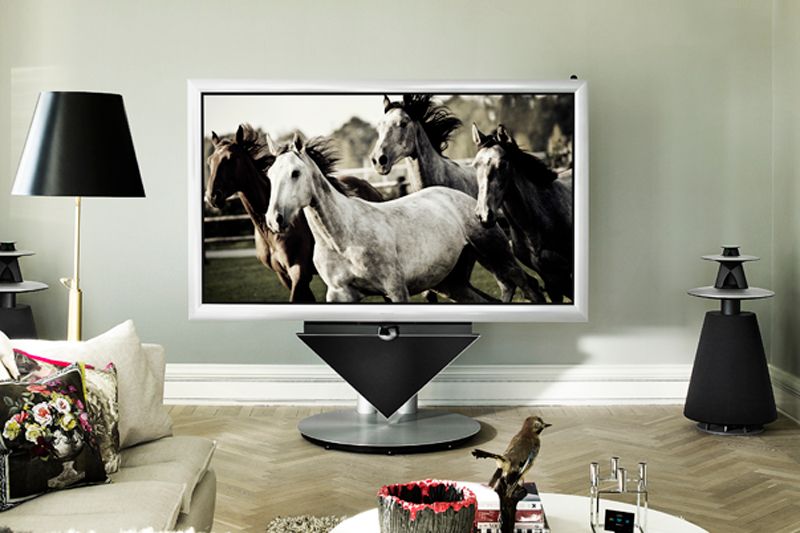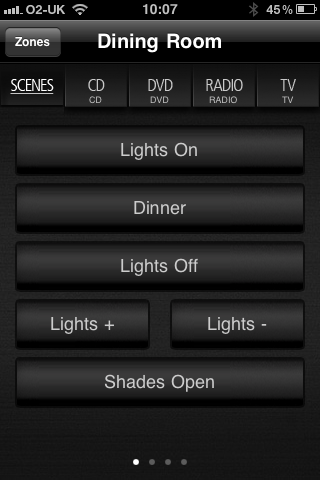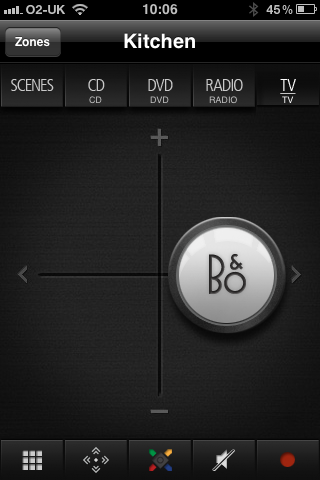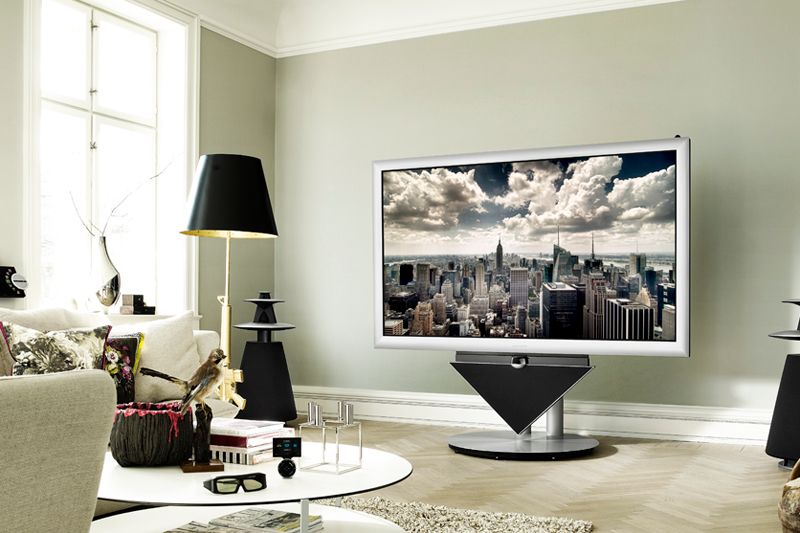Remember when the government deemed plasmas TVs the “4x4s of the living room”? Bang & Olufsen’s latest is more a road-train, clocking-in at a mighty 85-inches in diameter - so four times bigger than a 42-inch TV.
Our quick take
Aimed at wealthy types who want the best from technology without the hassle, this 3D plasma is among the best around in its class. The extra cash has gone on some mechanised functions that add wow factor, but little else, though the BeoVision 4-85 is not about value for money. An exercise in what’s possible when money isn't an object, the BeoVision 4-85 is a mightily diverting slab of tech.

Bang & Olufsen BeoVision 4-85 - 4.5 / 5
| FOR | AGAINST |
|---|---|
|
|
It’s high-def, it’s 3D, it’s got a swanky metallic finish (in black, silver, red, blue, golden or gunmetal, no less) … and its costs over £66,000.
Should any TV cost that much? Of course not, though don't make the mistake of comparing this to a mass market effort from the likes of Samsung, Sony, LG or Toshiba (we’ll make an exception for Panasonic; the BeoVision 4-85 is based around the same panel used in the TH-85VX200). Anything selling for this much does so on the understanding that there is no production line of any note, and no economies of scale. In short, each TV has to be custom made; you’re paying this much because no one else has one.
The Danish super-brand has suffered in recent times from a rather diluted approach whereby a few “entry level” TVs slightly lowered the tone - especially since few in B&O’s range packed the latest and greatest TV tech.
That same argument can’t be thrown at this monster plasma; Bang & Olufsen’s first-ever 3DTV is virtually impossible to beat on any level. This is also the brand’s first plasma TV for some time, the tech having wrongly gained an “old fashioned” reputation among the kind of consumers this TV is aimed at. Thus, you won't see the word “plasma” used in any literature, though its use here helps confirm the theory that the gas tech performs better with 3D than LCD/LED screens. Everybody knows that.
It’s a risk that pays off in spades. The huge size of the screen helps; the bigger the better for watching 3D, primarily because it covers more of your peripheral vision, so is more life-like (a factor that’s ignored by those pedaling 32-inch 3DTVs). The detail in both 3D and 2D pictures is exquisite, while the contrast - already very decent in 2D footage - is increased still further when watching 3D. That’s the effect of the 3D glasses, which lowers the perceived brightness considerably; something that also helps the colours of 3D Blu-ray discs really standout. Awesome.
Standard definition isn’t as impressive - it’s a hell of a stretch for a low bit-rate picture from Freeview to fill any screen this size without breaking-up, but the BeoVision 4-85 manages things pretty well. A Freeview HD tuner inside wouldn't go amiss, and though our sample didn't include one, it will soon be available. The GUI that controls the TVs main onscreen menus and digital TV guide is very simple and lacks the pizzazz of a Sony or LG TV, but there are reasons for that.
Firstly, it’s presumed that any buyer of this TV will already have a HD-capable set-top box from Sky or Virgin Media, and, secondly, there’s a robot on hand to tweak the pictures. Yes - a robot. Well, a robot eye, actually; it rears its head every 90-100 hours of viewing (or on-demand) from the top of the screen, lowers itself to in front of the panel, then takes some measurements. It then adjusts the picture back to B&O’s own industry standard presets (there’s very little picture parameters that can be changed by the viewer) and dives back into its hole. It does this because the picture quality - largely the brightness - changes ever so slightly as time goes by.


There’s more mechanisation on hand. A stand is available (from £4,000) that not only supports the TV and proffers a triangular centre (mono) speaker (to be used in conjunction with a surround sound set-up only), but lowers to TV to within a few centimeters of the floor when it’s switched off. It also swivels the TV a few degrees either side.
Adding to the expense still further is a choice of remote controls both programmable to operate virtually anything you want - 3D Blu-ray player, set-top box and even motorised curtains; the traditional Beo4, or OLED touchscreen Beo6 (£230 and £600 respectively).
If £0 sounds better than £600, you could always opt for BeoLink app, a free download from iTunes or the Android Market, and operate the BeoVision 4-85 from your smartphone.
Even mid-range TVs have apps these days, but BeoLink is smarter than all the rest. Provided you've had the TV networked to a B&O Master Link Gateway and you've got a lot of other gear talking to it (or on a Creston or AMX home automation system) the polished app can be used to lower blinds, dim the lights, tamper with temperature and even play music in different zones of your, err, rather large pad. As an app it's simple, comprising gestures and easy source selection. Zones can be named, "scenes" created and, of course, the TV controlled without it stretching to innumerable different pages.
To recap
Aimed at wealthy types who want the best from technology without the hassle, this 3D plasma is among the best around in its class. The extra cash has gone on some mechanised functions that add wow factor, but little else, though the BeoVision 4-85 is not about value for money

